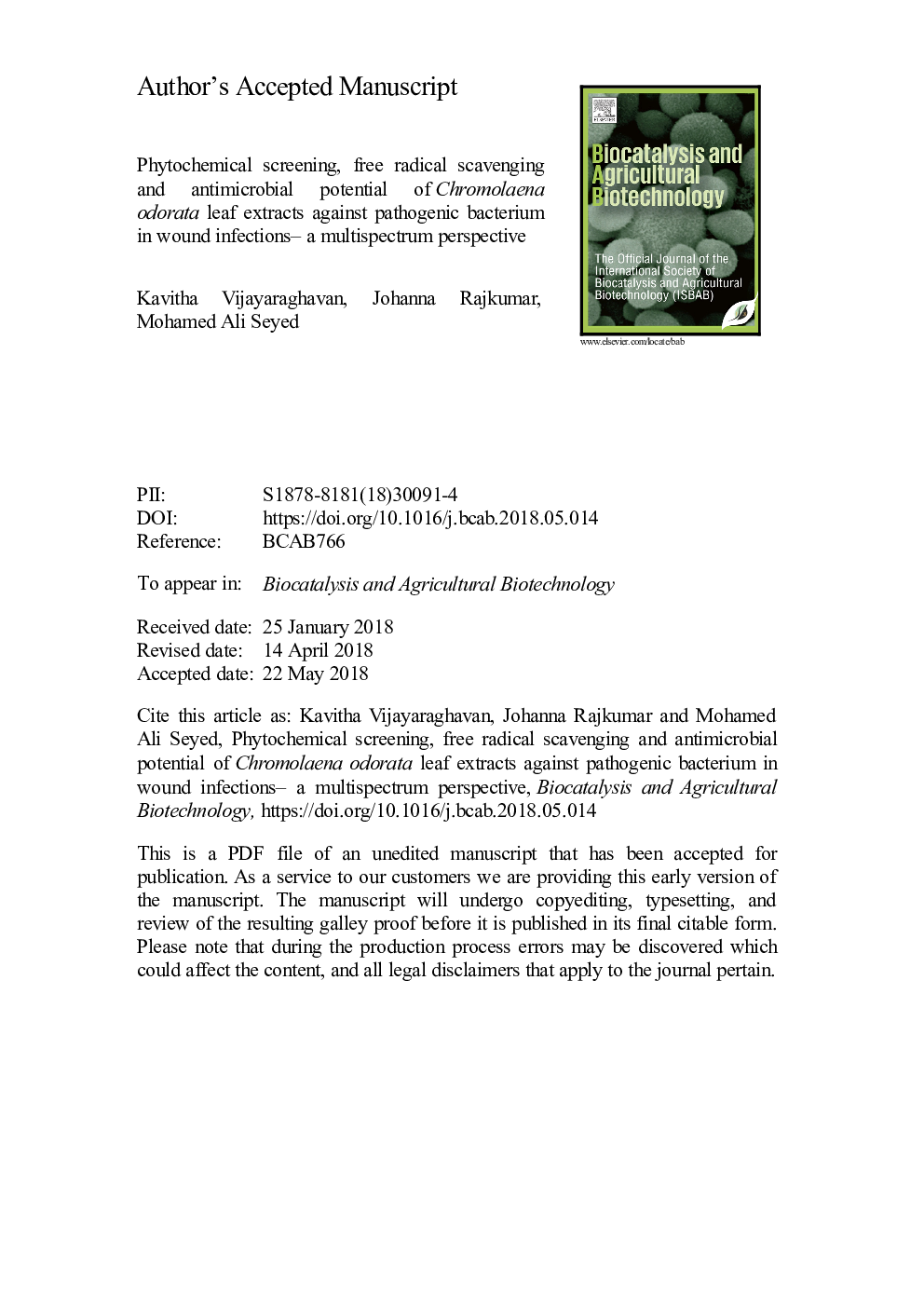| Article ID | Journal | Published Year | Pages | File Type |
|---|---|---|---|---|
| 8405888 | Biocatalysis and Agricultural Biotechnology | 2018 | 30 Pages |
Abstract
The chronic bed ridden patients acquire infections are the main source of alarming morbidity and mortality as their correlation with fomites. Fomites are reservoirs of drug-resistant pathogens found in the unhygienic clinical environment, which can infect patients and leading to high nosocomial infection rates and use of antimicrobial drugs. The use of and search for drugs and dietary supplements derived from plants have accelerated various therapeutic applications and obtaining new antimicrobial agents from natural resources is necessary to develop alternative drugs for safe and cost-effective health care. Hence, the objective of this research was to perform a phytochemical analysis on Chromolaena odorata and to study the antioxidant and antimicrobial activities of the ethanolic and aqueous extracts of its leaves. In this regard, phytochemicals obtained from C.odorata was investigated for their radical scavenging activity using 2, 2-diphenyl-1-picryl-hydrazyl (DPPH) assay. The phytochemical analysis revealed the presence of active ingredients such as glycosides, steroids, saponins, phenols, flavonoids, terpenoids, and tannins were categorized either as primary metabolites, such as chlorophyll, proteins, and amino acids, or as secondary metabolites, which include terpenoids and alkaloids. The ethanolic leaf extract showed a higher antioxidant activity and antibacterial properties than the aqueous extract exhibited. C. odorata leaf extracts of both ethanoloic and aqueous were subjected to an antibacterial study using the agar diffusion method. Our antibacterial results showed that the ethanolic extract could inhibit to a certain extent the growth of various human pathogens like Pseudomonas aeruginosa, Staphylococcus aureus, Bacillus subtilis, Bacillus cereus, and Escherichia coli. In summary, the present study highlights the significance of C. odorata leaf extracts for their antioxidant and antibacterial potentials, which explain the traditional use of the plant in animal and human medicine and cost-effective health care.
Related Topics
Life Sciences
Agricultural and Biological Sciences
Agricultural and Biological Sciences (General)
Authors
Kavitha Vijayaraghavan, Johanna Rajkumar, Mohamed Ali Seyed,
